Physics in the animal world: trilobites and their compound eyes
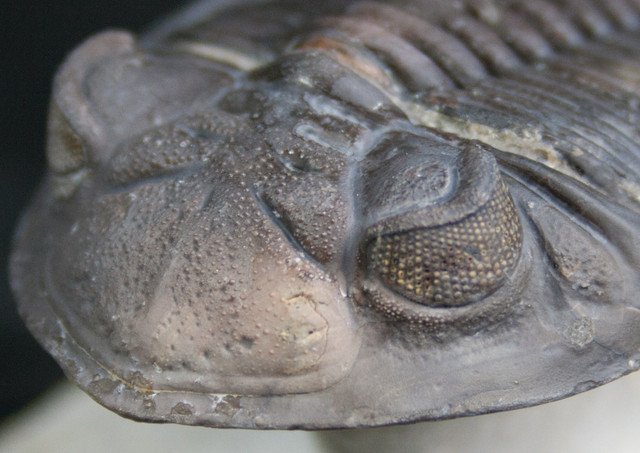
Trilobites - class marine animals extinct millions of years ago. Scientists know 9 groups of trilobites, which include 150 families, 5,000 genera and 10,000 species. The closest modern analogues of trilobites on the structure of the body - xiphosura and woodlice (by the way, "living fossils"). Most trilobites had a powerful armor. Mouth and foot were placed on the bottom side of the body, and the eyes - on the top.
Eyes Most trilobites were very difficult, and their structure is radically different from the structure of the eyes of modern animals. Crystalcore lens in these animals was not his place in trilobites were mineral lenses of calcite. Now the only animals mineral visual lenses are some of the existing now brittle and shellfish Acanthopleura granulata. The complexity of the trilobite eye was much higher complexity of the eye of our contemporaries.
As scientists discovered the structure of the trilobite eye? Due to the fact that they were composed of inorganic calcite trilobites eyes are very well preserved. The basic compound eye lens arthropods minerals calcite crystal structure is unusual. The light beam that goes under a certain angle is not refracted and is not divided into multiple beams. But the rays that fall on the animal's eye at a different angle, split into two beams which are refracted and act on sensory cells exactly as required for the subsequent formation of the overall image. Because trilobites eyes were almost completely inorganic, and then focus on a variety of objects they could not on their own. Most modern animal focus is automatic by changing the shape and size of the pupil and the lens (of course, this applies only to those animals who have and the pupil and the lens).
The eyes of most species of trilobites have a structure that is very similar to the structure of the optical designs that were created by Descartes and Huygens in the mid-17th century. Huygens eyepiece consists of two plano-convex lenses arranged flat parts to the eye of the beholder, and separated by a certain interval. The lenses are called eye lens and field lens. The focal plane is located between the two lenses. It was invented by Christiaan Huygens in the late 1660s and was the first composite (multi-part) eyepiece. Huygens discovered that two separate lens spacing may be used to manufacture an eyepiece with zero chromatic aberration. These aspheric lenses can optimize anaplanatnye formed by individual elements of the eye image, collecting light rays better than other systems. Among the types of trilobites met, who had no eyes at all (probably they lived in the dark or in very turbid water), for example, in the form Agnostus, or species that had primitive eyes.
But most of the other eye were developed. They are divided into three types :
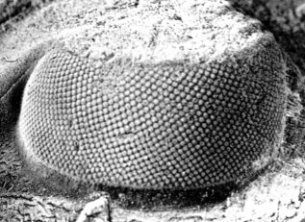
Holochroal type eye. They consisted of a large number of elementary "facets", we are talking about 15,000 prismatic lenses or even more of them. All elementary lenses are in direct contact with each other without separating membranes opaque. Transparent protective membrane covers the eyes of this type only from above.
__________________________________________________________
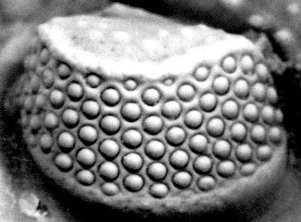
Schizochroal type eye. They consisted of about 700 members each and were separated by opaque walls. Separate "facets" were rounded or polygonal lenses. His eyes were topped with a transparent membrane, which is likely to protect the entire body from damage. All kinds of early trilobites eyes holochroal type, which then evolved into the type schizochroal eyes.
_________________________________________________________
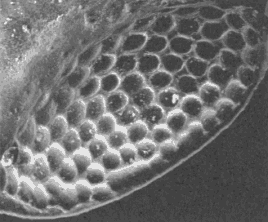
Abathochroal type eye. It was much less than the elements (no more than 70). They were all the same rounded or polygonal lens, which differed from the eye lens schizochroal type size. Each elementary lens is separated from neighboring opaque thin membrane (sclera). Those eyes were smaller in size than the previous two types, but provide their "owners" good vision. Probably abathochroal eyes were those of trilobites, who lived at the bottom or in the relatively murky water.
__________________________________________________________
Eyes of different species of trilobites differ in size and location. For example, those animals that live in the bottom ground, eyes positioned on stalks. They are allowed to bury in the mud animal to see everything happening around. Many trilobites had an excellent view. So, kind eyes Opipeuter provided almost all-round visibility - these floating animals seen everything that happens from the top, bottom and sides. The so-called dead zones, they had not.
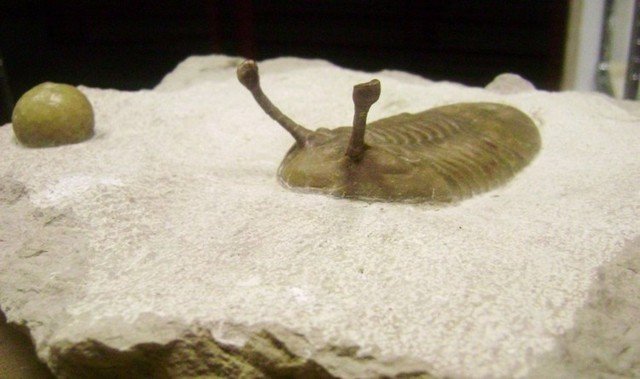
In general, the "picture" in trilobites evolved about the same as in modern insects compound eyes. The individual elements of the image evolved into the overall mosaic, which was better, the more the individual elements contained eye. Perhaps it can be compared with the image pixilation on the monitors - the more pixels, the more "grainy" we see.
Brigitte Shoemenenn, a paleontologist at the University of Bonn, one of the first studied the eyes of trilobites, using X-rays. Due to its method it could appreciate, not only the structure of the lens facets, but also cells which are located underneath. Under each miniature lens sensory cells are located, and their arrangement resembles arrangement of flower petals. The central element was diamond-shaped photoreceptors. In the intermediate space located pigment cells, which gave the eyes brown-black color.
As mentioned above, with the image in focus trilobites did not have any problems. They both saw the objects next to each other and the objects that were on them for hundreds of meters. In general, these ancient animals have complex eyes, which provides a "picture" is not worse than the eyes of modern animals. And while the structure of these ancient eyes radically different from the eyes of the structure of modern animals.
Referenced Materials
- https://en.wikipedia.org/wiki/Trilobite
- https://en.wikipedia.org/wiki/Xiphosura
- https://en.wikipedia.org/wiki/Eyepiece#Huygens
- https://en.wikipedia.org/wiki/Holochroal_eye
- https://en.wikipedia.org/wiki/Eye#Apposition_eyes
- http://www.sciencemag.org/news/2013/03/looking-trilobite-eye
- https://en.wiktionary.org/wiki/abathochroal